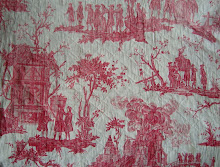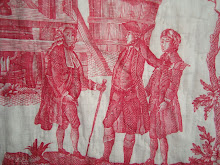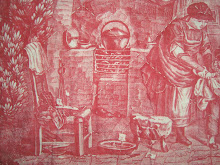















I recently bought a batch of small French toile fragments, some in good condition, others quite worn, but most are documented pieces that I have been able to identify using some of my books. They are mostly early 19th century pieces that either describe the progression in style from Rococo to Neoclassical, or full blown neoclassical design in all its glory. They also exploit the technology of roller printing to its limit, using background texture and pattern to link motifs that used to 'float' like islands on the background fabric because of the constraints of block printing techniques and to a lesser degree plate printing.


























































































































